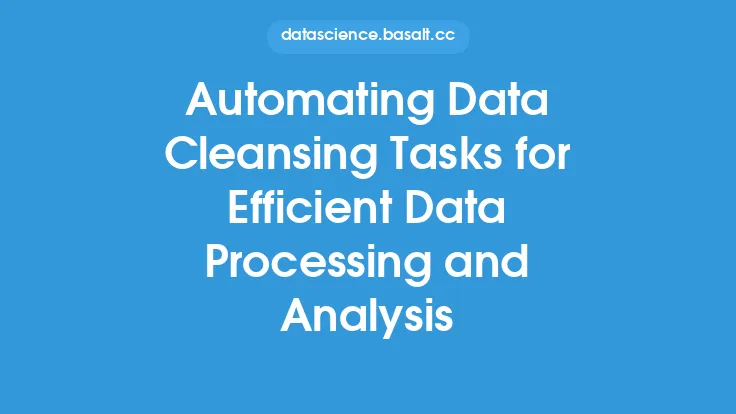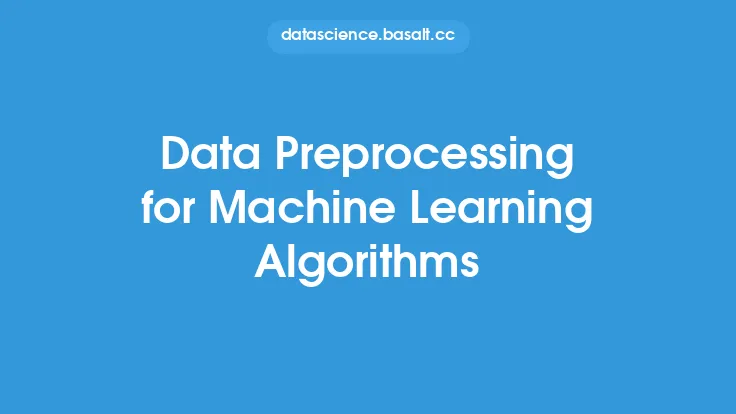Data processing algorithms are the backbone of any data engineering system, enabling the efficient and accurate transformation of raw data into meaningful insights. These algorithms are designed to handle large volumes of data, performing tasks such as data cleaning, data transformation, and data reduction. In this article, we will delve into the world of data processing algorithms, exploring their types, applications, and importance in the field of data engineering.
Types of Data Processing Algorithms
There are several types of data processing algorithms, each designed to perform a specific task. Some of the most common types include:
- Sorting algorithms: These algorithms arrange data in a specific order, such as alphabetical or numerical. Examples of sorting algorithms include bubble sort, quicksort, and mergesort.
- Searching algorithms: These algorithms locate specific data elements within a larger dataset. Examples of searching algorithms include linear search and binary search.
- Filtering algorithms: These algorithms remove unwanted data elements from a dataset. Examples of filtering algorithms include threshold filtering and regression filtering.
- Transformation algorithms: These algorithms convert data from one format to another. Examples of transformation algorithms include data aggregation and data normalization.
- Reduction algorithms: These algorithms reduce the size of a dataset while preserving its essential characteristics. Examples of reduction algorithms include data sampling and data dimensionality reduction.
Applications of Data Processing Algorithms
Data processing algorithms have a wide range of applications in various fields, including:
- Data science: Data processing algorithms are used to prepare data for analysis, enabling data scientists to extract insights and make informed decisions.
- Business intelligence: Data processing algorithms are used to generate reports, dashboards, and other visualizations that help businesses understand their operations and make data-driven decisions.
- Machine learning: Data processing algorithms are used to prepare data for machine learning models, enabling the development of predictive models and other intelligent systems.
- Data warehousing: Data processing algorithms are used to extract, transform, and load data into data warehouses, enabling the creation of centralized repositories of integrated data.
Importance of Data Processing Algorithms
Data processing algorithms are essential in the field of data engineering, as they enable the efficient and accurate transformation of raw data into meaningful insights. Some of the key benefits of data processing algorithms include:
- Improved data quality: Data processing algorithms can detect and correct errors, inconsistencies, and inaccuracies in data, resulting in higher-quality data that is more reliable and trustworthy.
- Increased efficiency: Data processing algorithms can automate many data processing tasks, freeing up human resources for more strategic and creative work.
- Enhanced scalability: Data processing algorithms can handle large volumes of data, making them ideal for big data applications and other scenarios where large amounts of data need to be processed.
- Better decision-making: Data processing algorithms can provide insights and patterns that would be difficult or impossible to detect manually, enabling better decision-making and more informed strategic planning.
Technical Aspects of Data Processing Algorithms
Data processing algorithms can be implemented using a variety of programming languages and technologies, including:
- Python: A popular language for data science and machine learning, Python has a wide range of libraries and frameworks that support data processing, including NumPy, pandas, and scikit-learn.
- Java: A popular language for large-scale data processing, Java has a wide range of libraries and frameworks that support data processing, including Apache Hadoop and Apache Spark.
- SQL: A popular language for database management, SQL has a wide range of features that support data processing, including data filtering, data transformation, and data aggregation.
- NoSQL databases: A type of database that is designed to handle large amounts of unstructured or semi-structured data, NoSQL databases have a wide range of features that support data processing, including data filtering, data transformation, and data aggregation.
Challenges and Limitations of Data Processing Algorithms
While data processing algorithms are powerful tools for transforming raw data into meaningful insights, they also have several challenges and limitations, including:
- Data quality issues: Poor data quality can significantly impact the accuracy and reliability of data processing algorithms, resulting in incorrect or misleading insights.
- Scalability issues: Large volumes of data can be challenging to process, particularly if the data is complex or has a high degree of variability.
- Algorithmic complexity: Some data processing algorithms can be computationally intensive, requiring significant resources and processing power to execute.
- Interpretability issues: Some data processing algorithms can be difficult to interpret, making it challenging to understand the insights and patterns that they produce.
Future Directions of Data Processing Algorithms
The field of data processing algorithms is constantly evolving, with new technologies and techniques emerging all the time. Some of the future directions of data processing algorithms include:
- Artificial intelligence: The use of artificial intelligence and machine learning to improve the accuracy and efficiency of data processing algorithms.
- Cloud computing: The use of cloud computing to enable scalable and on-demand data processing, reducing the need for expensive hardware and infrastructure.
- Real-time processing: The use of real-time processing to enable faster and more responsive data processing, supporting applications such as streaming analytics and IoT sensor processing.
- Edge computing: The use of edge computing to enable data processing at the edge of the network, reducing latency and improving performance in applications such as autonomous vehicles and smart cities.





